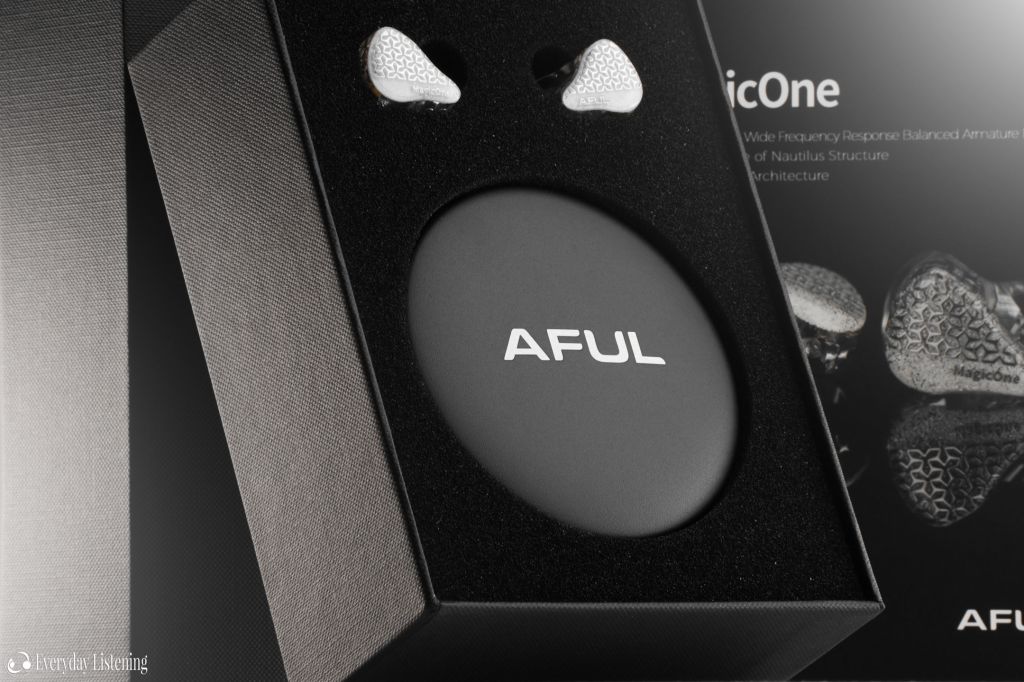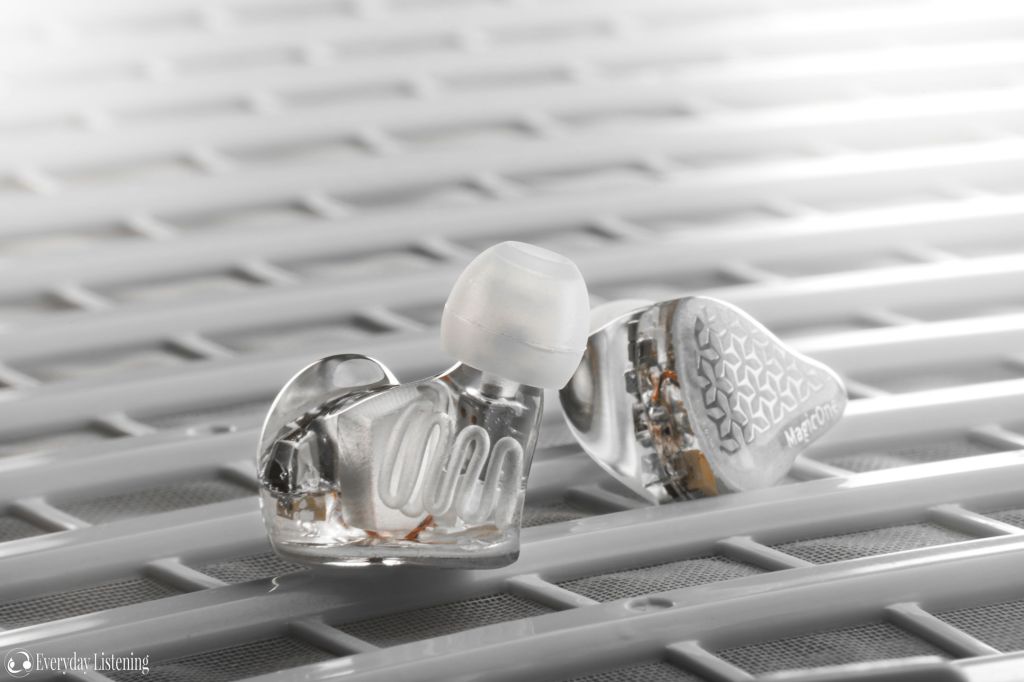Pros –
Excellent comfort and product design, Well balanced sound profile, Midrange and treble resolution exceeds peers, Convincing stage width and layering
Cons –
Stage could have more depth, Some may find them bass light, Still lacks dynamics and bass extension
Verdict –
The MagicOne represents terrific value and appeals to those wanting excellent long-term listenability whilst upholding a natural timbre and excellent resolution.
About AFUL –
AFUL is a Chinese audio company founded in 2018. Their in-house acoustic team focuses on implementing the latest technologies including 3D printing and high-quality testing equipment. In addition to boasting the ability to design unique acoustic structures, the team has a talent for circuitry, combining both to achieve their desired sound. AFUL has won a number of awards over the years for their innovations and currently hold 3 patents for their technologies.
Introduction –
The MagicOne is the realization of AFUL’s research efforts on acoustic structures and RLC circuitry for audio applications. It combines these technologies with a single in-house customized balanced armature to deliver full-range sound and a desirable frequency response. There has been a lot of talk about this model and much of it has been overwhelmingly positive. With the stage set and such a unique acoustic design behind it, I was very curious to see what AFUL had achieved and how successfully they would be able to overcome the platform’s limitations. More than that, I wanted to see if the MagicOne would extend past a proof-of-concept design and compete with the best the price class has to offer. Despite being my introduction to the brand, I had no doubt there was sound foundation behind AFUL’s method.
The Magic One is available for $109 USD on Amazon. You can read all about it and treat yourself to a unit on HiFiGO.
Disclaimer –
I would like to thank Ivy from HiFiGO very much for reaching out to organise a review of the new MagicOne. All words are my own and there is no monetary incentive for a positive review. Despite receiving the earphones free of cost, I will attempt to be as objective as possible in my evaluation.
Contents –
- Page 1: Intro, Unboxing, Design
- Page 2: Sound and Source Pairings
- Page 3: Comparisons & Verdict
Specifications –
- Drivers: Self-Developed Wide-Frequency Response BA
- Frequency Response: 5 Hz – 25 kHz
- Impedance: 38 ohms
- Sensitivity: 103 dB
Behind the Design –
Self-Developed Wide-Frequency Response BA
Rather than using an off-the-shelf unit from Knowles, Sonion or Bellsing, AFUL developed their own BA in-house for the MagicOne. As a result, they were able to achieve a more specific frequency response and range to suit their design. This is especially pertinent given the complex acoustic design at play so all components go hand in hand to deliver a quality overall product.
SE-Math Acoustic Technology
This refers to the design features in place to enhance high-frequency extension. As opposed to a tube and damper, a 3D-printed horn structure with a filter has been placed at the front of the BA driver which increases high-frequency sensitivity. In addition, an RLC electro-acoustic network has been used to further improve extension. Basically, RLC stands for resistor, inductor and capacitor and can be used to tune a specific frequency range. AFUL mentions that they use this to tune out peaks caused by resonances.
Nautilus-Inspired Bass Chamber
AFUL doesn’t go in-depth into this on their reference material as it is a patent pending design, but it easily the most interesting parts of the IEM. The MagicOne has a sealed housing but appears to use a vented BA driver. A long, ultra-thin 3D-printed acoustic tube extends from the rear and appears to serve as a high-pass filter. It connects to a large chamber that is used as a Helmholtz resonator. Increasing the box volume and tube length both serve to lower the resonant frequency and thereby enhance bass extension. Back waves travelling through the system reflect in reverse phase and constructively interfere with the sound output, enhancing bass sensitivity/volume. This is a very interesting system that has been seen on the high-end of IEM design. It is exciting to see it being put to use in such a precisely engineered fashion on such an affordable design.
Unboxing –

The unboxing experience is pleasant and suitable for an affordable IEM. It comes in a small card box with an outer sleeve that showcases the design, branding and specifications. Sliding off the sleeve and removing the lid reveals the earpieces within a foam inlet with an aluminium carrying case below. The case contains the cable alongside two sets of ear tips. They are all silicone but come in different varieties. I preferred the transparent tips and used them for the remainder of the review.
Design –
Just as we admire the glass-topped engine bays found on supercars, the MagicOne achieves form simply through the execution of its function. The shells are slender and well formed with rounded edges and a high gloss finish. Being resin-filled, they have a nice feel and sense of heft. Using a 3D printing process, AFUL was able to achieve excellent clarity with only a few micro bubbles apparent when pixel peeping my photos in Lightroom. This also permits a window into the intricately designed tube structure and horn system at play alongside the RLC network at the rears. The faceplates are adorned with AFUL branding and a geometric pattern sporting a brushed metal finish set atop a white snowflake glitter. It gives the earphones a nice sense of depth and intricacy and this design permits the buyer to nerd out over the internals whilst remaining unassuming when wearing the IEMs in public.

Up top are 0.78mm 2-pin connectors that open up a variety of upgrade and replacement options. the included cable impresses with its design sporting a Litz Type-4 geometry and a 4-wire braid with comfortable pre-molded ear guides. The cable has a matching silver/grey colour scheme and metal connectors that give it a premium feel. The jacket is TPU making it a little tacky but also very flexible with minimal memory or microphonic noise transmission. It is easy to coil and live with overall. I do feel that the MagicOne would benefit from a balanced termination as it has relatively low sensitivity, and most sources provide greater power from their balanced output. I can also understand that 3.5mm makes sense for a budget IEM where the buyer shouldn’t be expected to invest heavily in the source. Given the quality of the cable, it would have been nice to have the option from the factory.
Fit & Comfort –
I adore the ergonomics of the MagicOne and the general consensus online appears to agree. This is a very comfortably designed IEM with compact dimensions aided by the space-efficient single-driver design. In addition, the shells are rounded in all regards and taper down to a narrow yet well-contoured nozzle section. This minimizes the risk of hotspot formation on the outer ear and will suit a wide range of listeners. The fit depth is on the deeper side and the seal is excellent due to a well-angled, protruding nozzle design.

Sizing down tips is advised to keep the earphones snug within the ear and to achieve the smoothest treble response. Those wanting more brightness can size up and enjoy a shallower fit. Being fully sealed, there is some sensation of wearing pressure, but this also affords excellent passive noise isolation. Foam tips do the best job but, even with silicone tips, the combination of a deeper fit style and sealed housing permits isolation suitable for travel and noisy environments.



